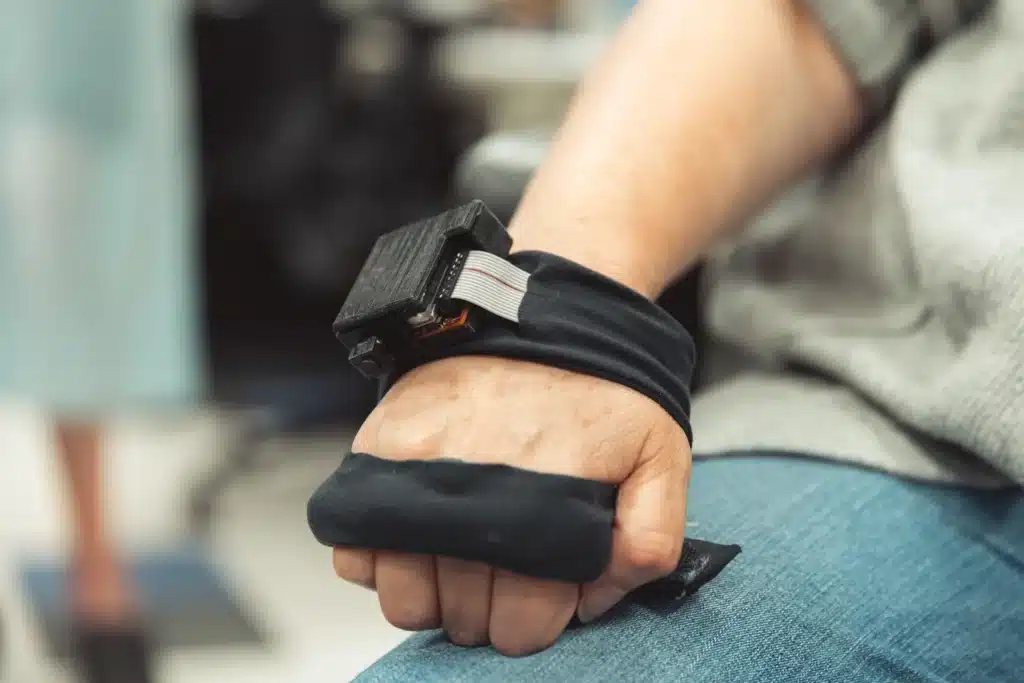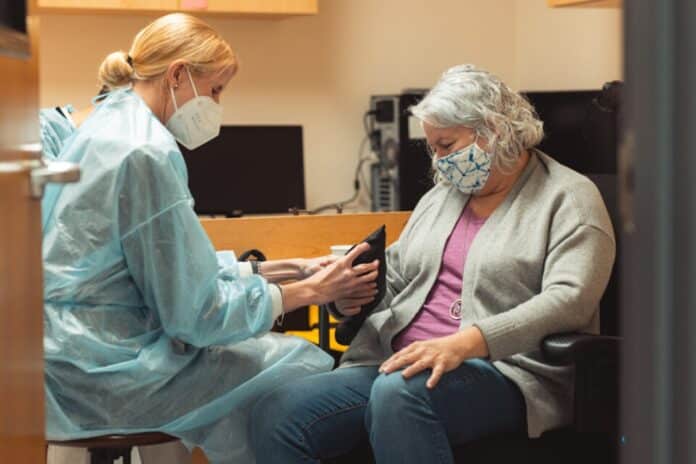After a stroke, people can have uncontrollable spasms that make their arms and hands twist into tight fists. The usual treatments are costly injections or strong medications that can make patients sleepy. However, they only help for a short time.
Now, engineers at Stanford University and the Georgia Institute of Technology have made a particular glove-like device. It uses gentle vibrations to help hands and fingers, giving results similar to or better than injections or drugs.
Allison Okamura, the Richard W. Weiland Professor in the Stanford School of Engineering and senior author of a series of studies introducing the glove, explained, “Vibration therapies are not unknown, so we knew we would see some effect, but clinically it was just amazing to see that these beneficial effects persist.”
Caitlyn Seim, a postdoctoral researcher in Okamura’s lab and initiator of the project, said, “There are significant improvements in symptoms using the simulation method. And we think it can potentially address several effects of stroke – numbness, spasticity, and, for some, limited range of motion.”
This is the first time researchers have tried using vibrotactile stimulation (VTS) in a wearable device. Current methods use big, costly machines that you can only use in clinics.
In trials, patients wore the VTS device for three hours a day for eight weeks. They compared its effectiveness to injections and pills. They found that more than half of the people who got regular injections had the same or better results with the VTS glove.
Okamura said, “We can safely say that VTS is at least as good as injections and oral medicines. And it was exciting to see some maintenance of the improvements over time, though more study is needed.”
The device was initially created by Seim and his team at Georgia Tech to assist people in learning motor tasks using touch guidance. Later, they explored its use as a music exercise tool for those with partial spinal cord injuries. Through this, they discovered that touch stimulation could be therapeutic by itself. The unique wearable design of the device allows for continuous therapy, as users can wear the gloves all day.
Seim expressed excitement about the potential therapeutic benefits of stimulation for brain and spinal injuries, saying, “We started to wonder if stimulation might also be a therapeutic tool for brain and spinal injury. It was fascinating.”
The new VTS device wraps around the wrist, palm, and fingers. It has motors that give constant gentle vibrations to fingers and hand muscles, similar to a vibrating cell phone. Patients can wear it while doing regular activities.

Researchers are still studying how the device works, but it taps into the brain’s ability to adapt. They believe the vibrations can help control muscles and send signals to the brain to retrain it. This helps the brain relearn how to feel and understand the position of the arm, hands, and fingers in space.
In video testimonials, patients praise VTS over injections and pills. They find the VTS glove comfortable to wear. VTS is non-invasive, cheap, and avoids side effects. Many patients in trials reduced their use of pills, and some even stopped injections for VTS.
“This glove is fantastic, better than injections. My fingers and wrist feel more relaxed, said one patient after two weeks.
“I stopped my morning muscle relaxer and want to stop the night dose, too, because the glove works,” said another patient after two weeks.
Both researchers believe VTS could help with other brain injury-related motor conditions and diseases, expanding beyond strokes. They are already investigating its effectiveness in these areas.
“There are 100 million stroke survivors worldwide,” Up to a third of them experience arm spasms. While we focused on this large group first, we also considered other conditions. said Seim.
Currently, the VTS device is only available to patients in clinical trials. Okamura and Seim are preparing for further studies to understand its long-term effectiveness and improve its design.
The team recently received a significant grant from the National Science Foundation to develop the vibrotactile glove into a commercial product.
“We believe VTS is a safe and effective treatment,” Okamura said. “We hope to make it available as a therapy option for everyone.”
In conclusion, the vibrating glove represents a novel approach to addressing post-stroke muscle spasms, offering an alternative to traditional treatments that may be more accessible, affordable, and sustainable. Continued research and development in this area have the potential to significantly impact the rehabilitation outcomes and overall well-being of stroke patients.
Journal reference:
- Caitlyn Seim, Bingxian Chen, et al., Relief of post-stroke spasticity with acute vibrotactile stimulation: controlled crossover study of muscle and skin stimulus methods. Frontiers in Human Neuroscience. DOI: 10.3389/fnhum.2023.1206027.
- Caitlyn Seim, Bingxian Chen, et al., Daily Vibrotactile Stimulation Exhibits Equal or Greater Spasticity Relief Than Botulinum Toxin in Stroke. Archives of Physical Medicine and Rehabilitation. DOI: 10.1016/j.apmr.2023.03.031.
